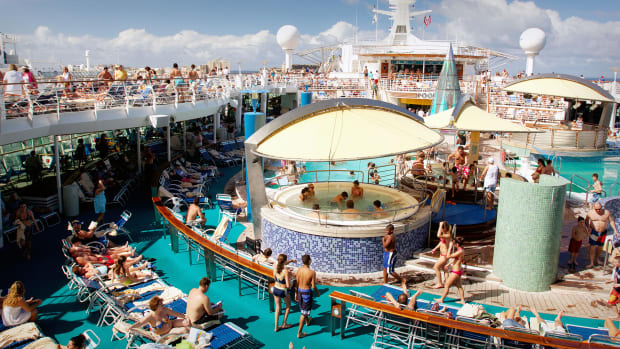Since Royal Caribbean (RCL) returned to North American sailings in July 2020, the cruise line has dealt with an ever-changing environment due to the pandemic.
First, it has had to comply with the Centers for Disease Control and Prevention's limits on passenger loads, frequently changing mask rules, precruise testing protocols, and requirements that crews be fully vaccinated.
Those rules have been further complicated by Russia's invasion of Ukraine, which kept some crew members from again signing on with the cruise line. Royal Caribbean and all cruise lines have been challenged by having to figure out how many crew members they need and then meeting that need.
RCL's chief executive, Jason Liberty, made clear that passenger loads have been returning to normal. He spoke during the company's first-quarter-earnings call.
"We continue to see strong demand for leisure travel and cruising. The robust secular trend of experiences over things that propelled our business in the past years is now recovering toward pre-covid levels," he said.
"Consumers are now reengaging with the world, and as a result, spending on travel in 2022 is set to outpace prepandemic levels, with consumers planning to travel more frequently.
"Cruise consideration is the highest it has been in two years and nearing prepandemic levels, with the most significant recovery among those new to cruising."
That's good news for the cruise line, but it also has created a problem.

Dukas/Universal Images Group via Getty Images
Royal Caribbean Has a Problem (and a Plan)
Sailing with full ships requires a full complement of crew. That's been a challenge for Royal Caribbean for a variety of reasons.
First, crew members must be fully vaccinated, In addition, the company has had to deal with the U.S. government being slow to process visas.
The combination of a limited hiring pool and delays in onboarding crew members has led to staffing problems. The company has also had to deal with crew members testing positive for covid, which forces them to be quarantined until they return multiple negative tests.
It's a perfect storm and left Royal Caribbean struggling to fill open positions. Not enough crew members leads to slower service and longer wait times onboard.
That in turn has kept some ships operating at less than full passenger capacity.
To solve the situation, the cruise line has an aggressive plan to add more crew, according to Matt Hochberg of Royal Caribbean Blog, which is not affiliated with the company.
"The company has been holding job fairs in Europe since April to get more crew members, which have taken them to countries such as Serbia, Bulgaria, Turkey, Croatia and more," Hochberg reported..
"In addition, Royal Caribbean Group signed a deal in Trinidad and Tobago to hire more crew. The goal is to hire 2,000 people from the islands to work on Royal Caribbean Group ships."
Crowds Are Coming Back to Cruises
Royal Caribbean needs more crew because passengers have been coming back to ships.
"Load factors improved throughout the first quarter and we finished the month of March at a load factor of 68%," Liberty said. Load factor on cruise ships is the percentage of available rooms occupied.
"We expect our load factors to continue to build, averaging between 75% and 80% in the second quarter, and reaching triple digits by the end of the year.
"We continue to be thoughtful about the build of our business, being mindful of maintaining price integrity, taking advantage of high onboard spenders and, as always, focusing on the health and safety of our guests and crew."
RCL needs more crew members, and everywhere in the world it's a challenge to find and hire them. Royal Caribbean has decided to be aggressive and step up its recruiting efforts.







